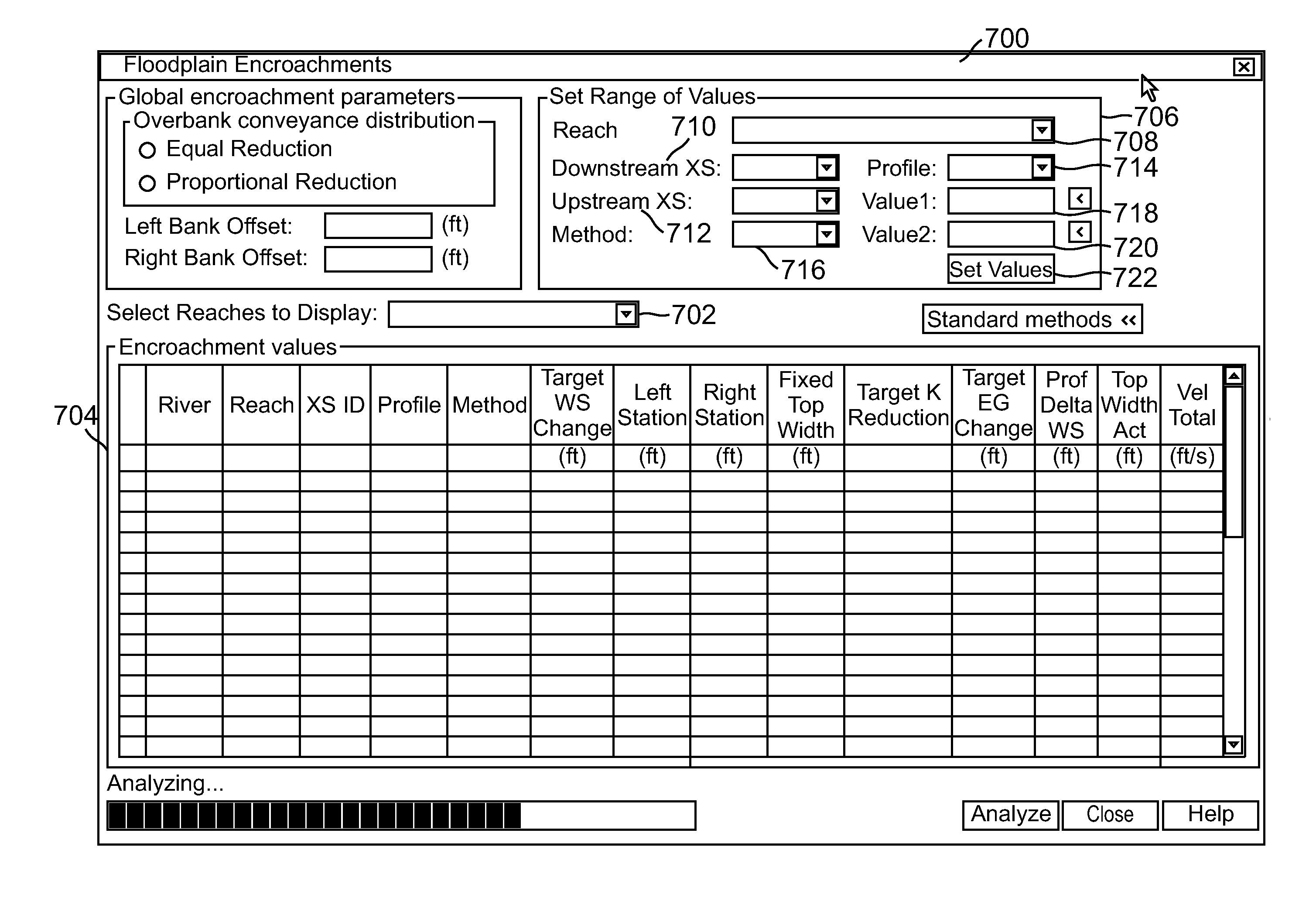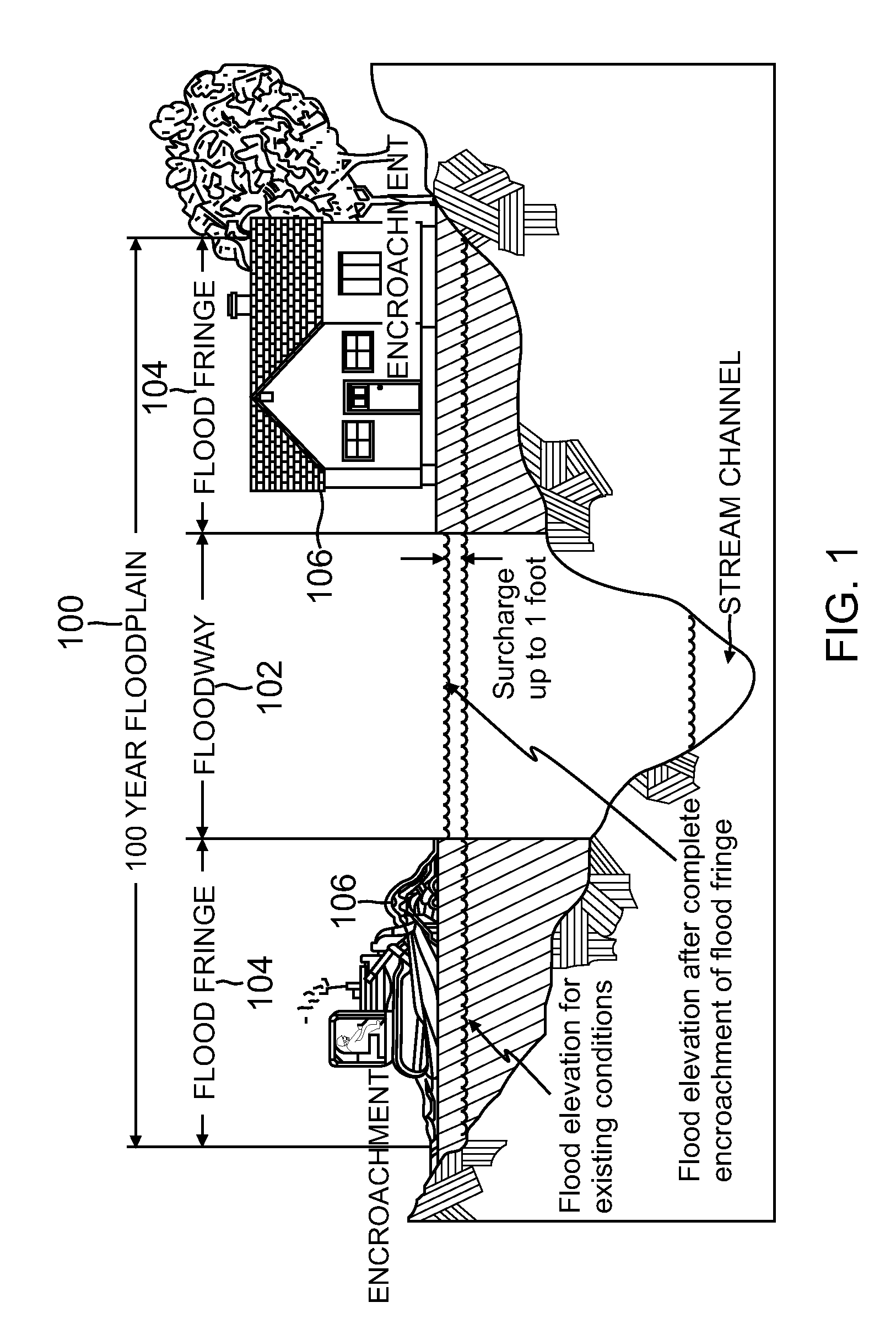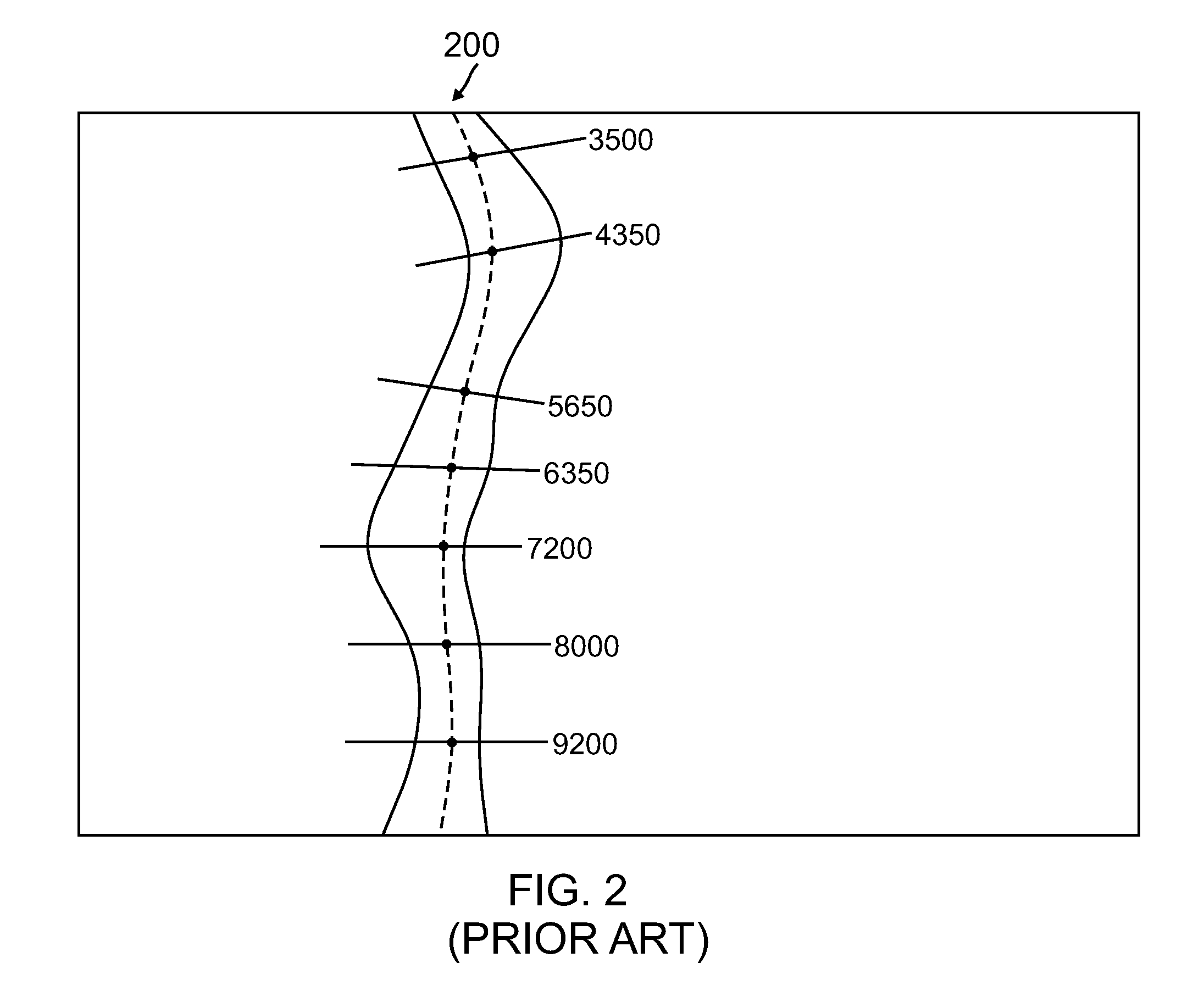Automated floodplain encroachment computation
a floodplain and computation technology, applied in the field of geospatial mapping systems, can solve the problems of inability to provide an efficient mechanism for analyzing floodplains, inability to permit any encroachment construction, and inability to provide floodplain construction efficiency, etc., to reduce the amount of time required by users, reduce the amount of time required, and simplify the workflow
- Summary
- Abstract
- Description
- Claims
- Application Information
AI Technical Summary
Benefits of technology
Problems solved by technology
Method used
Image
Examples
Embodiment Construction
[0039]In the following description, reference is made to the accompanying drawings which form a part hereof, and which is shown, by way of illustration, several embodiments of the present invention. It is understood that other embodiments may be utilized and structural changes may be made without departing from the scope of the present invention.
Overview
[0040]One or more embodiments of the invention allow an engineer to quickly complete a FEMA floodplain encroachment study when compared to all prior art methods. The workflow greatly simplifies the prior art process that is manual, disjointed, and comprised of several different interfaces. Further, embodiments of the invention provide the ability to compute and view floodplain encroachment data in a single location / interface.
Hardware Environment
[0041]FIG. 6 is an exemplary hardware and software environment 600 used to implement one or more embodiments of the invention. The hardware and software environment includes a computer 602 and...
PUM
 Login to View More
Login to View More Abstract
Description
Claims
Application Information
 Login to View More
Login to View More - R&D
- Intellectual Property
- Life Sciences
- Materials
- Tech Scout
- Unparalleled Data Quality
- Higher Quality Content
- 60% Fewer Hallucinations
Browse by: Latest US Patents, China's latest patents, Technical Efficacy Thesaurus, Application Domain, Technology Topic, Popular Technical Reports.
© 2025 PatSnap. All rights reserved.Legal|Privacy policy|Modern Slavery Act Transparency Statement|Sitemap|About US| Contact US: help@patsnap.com



